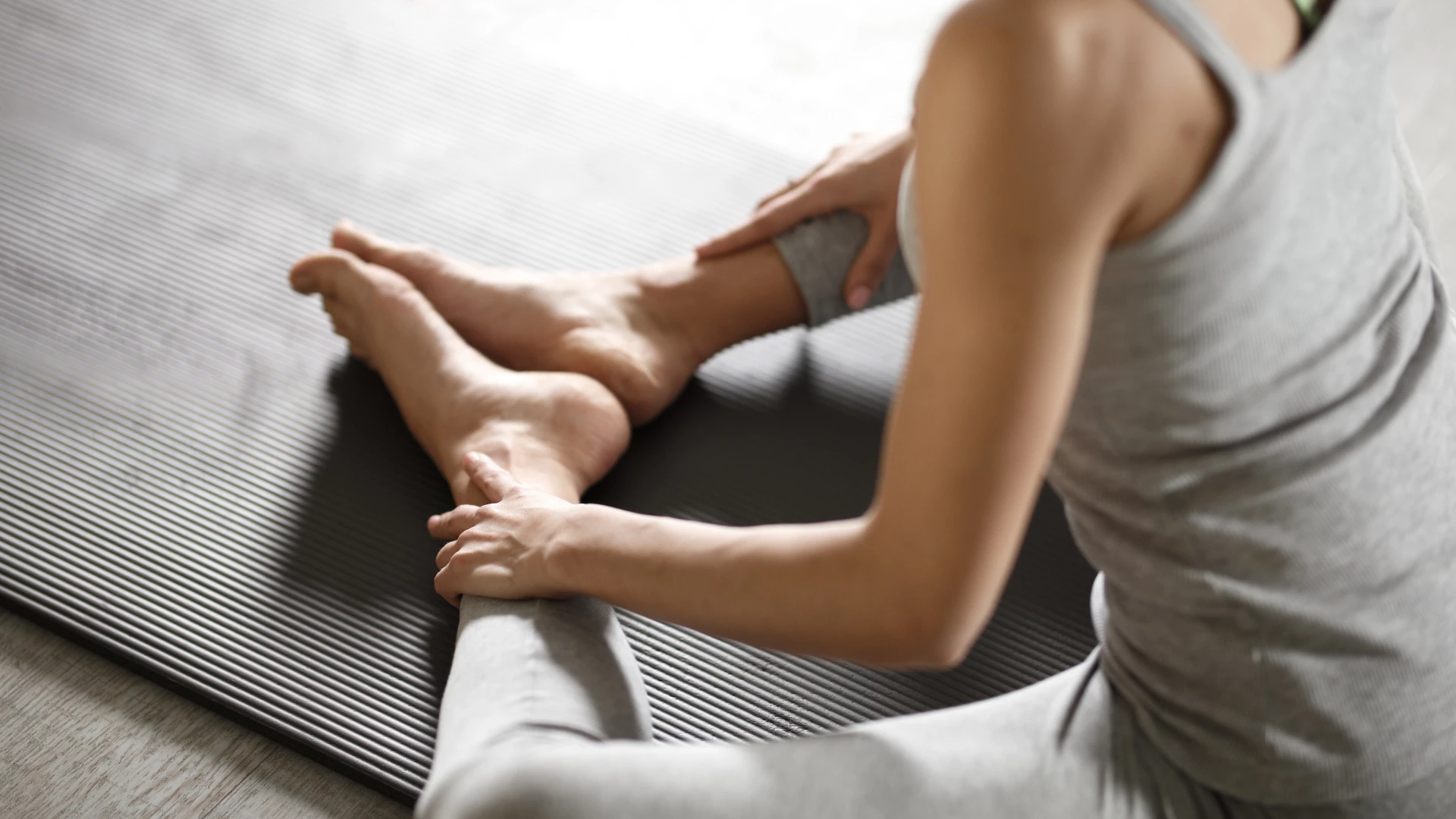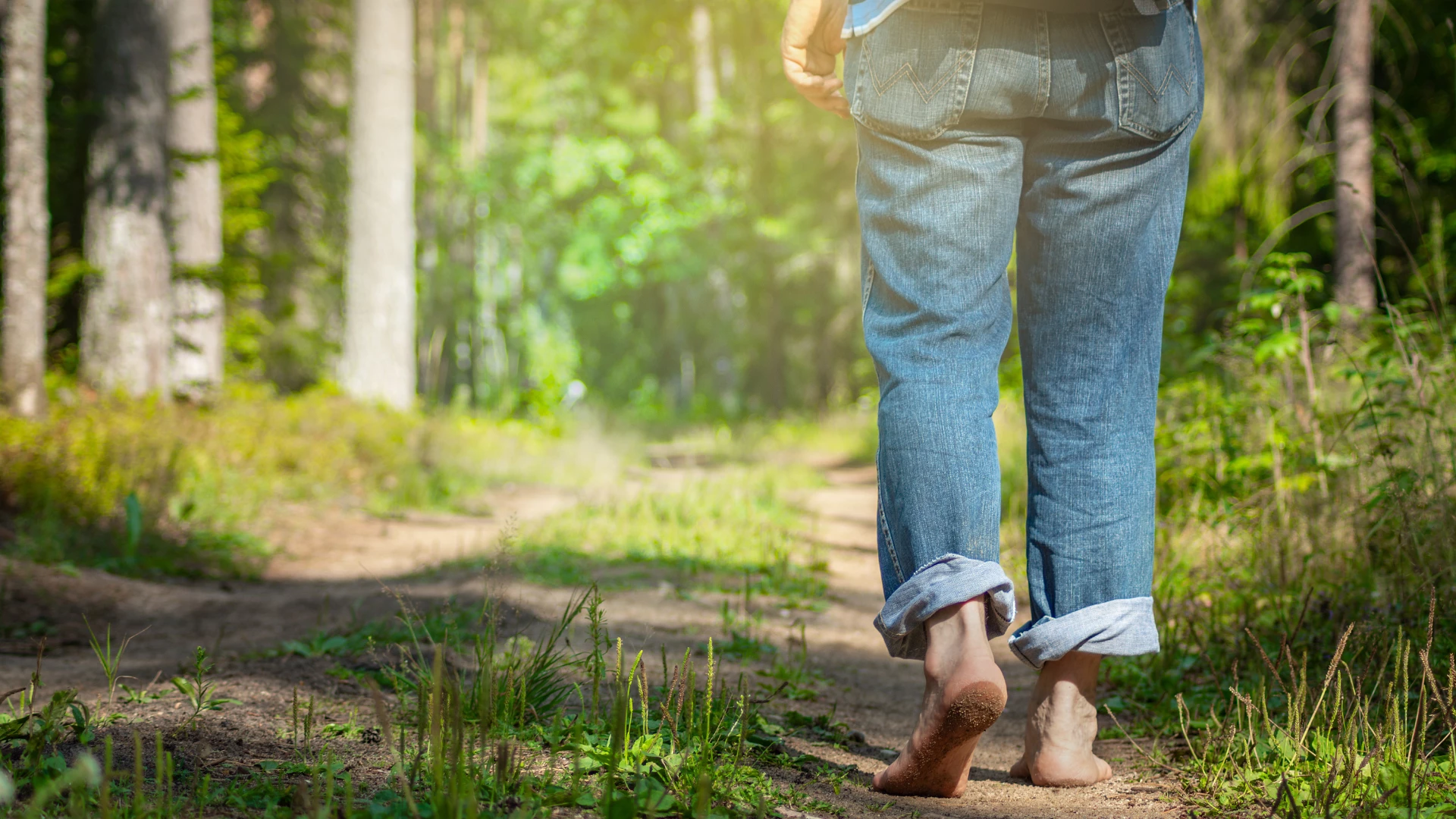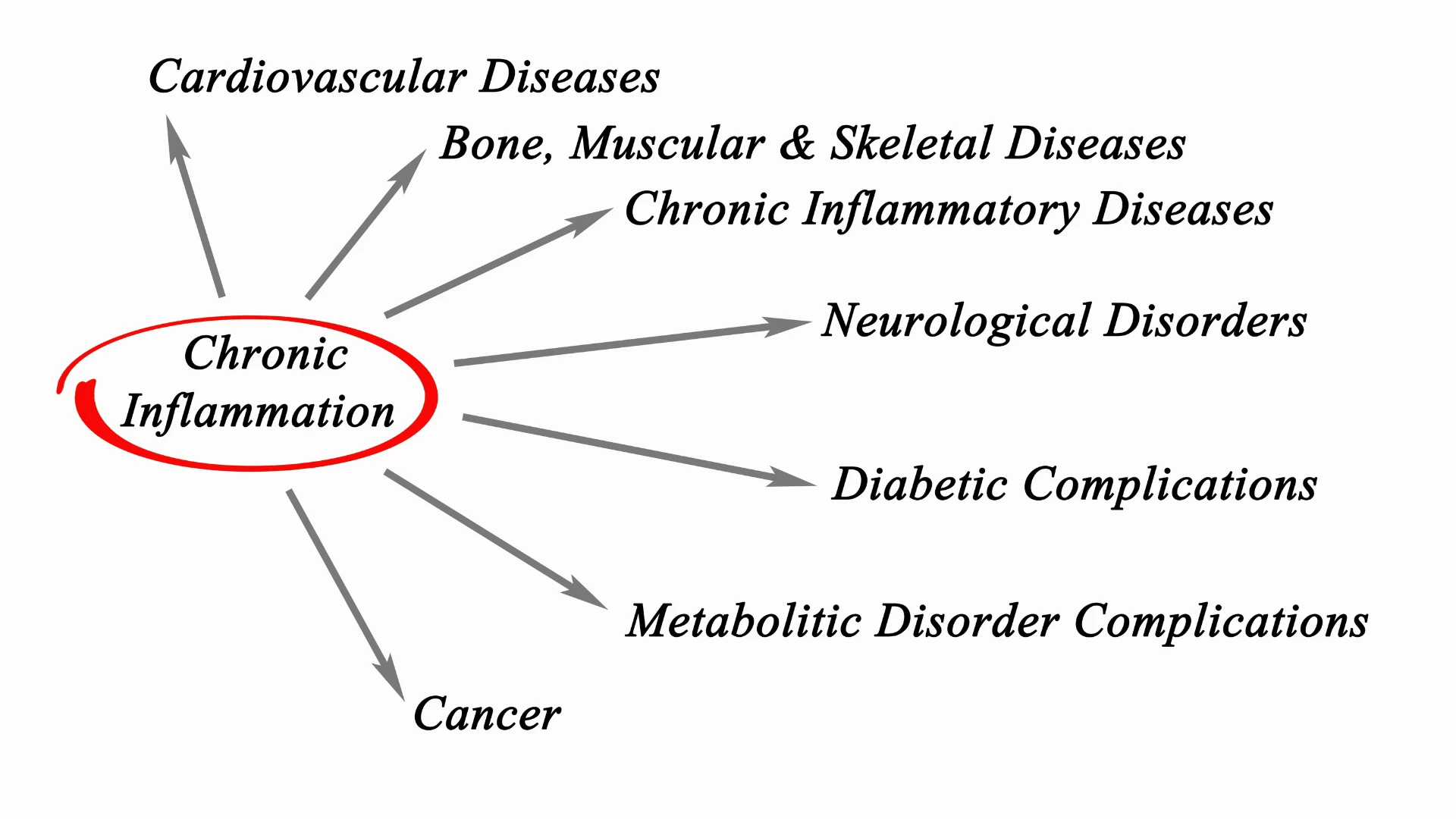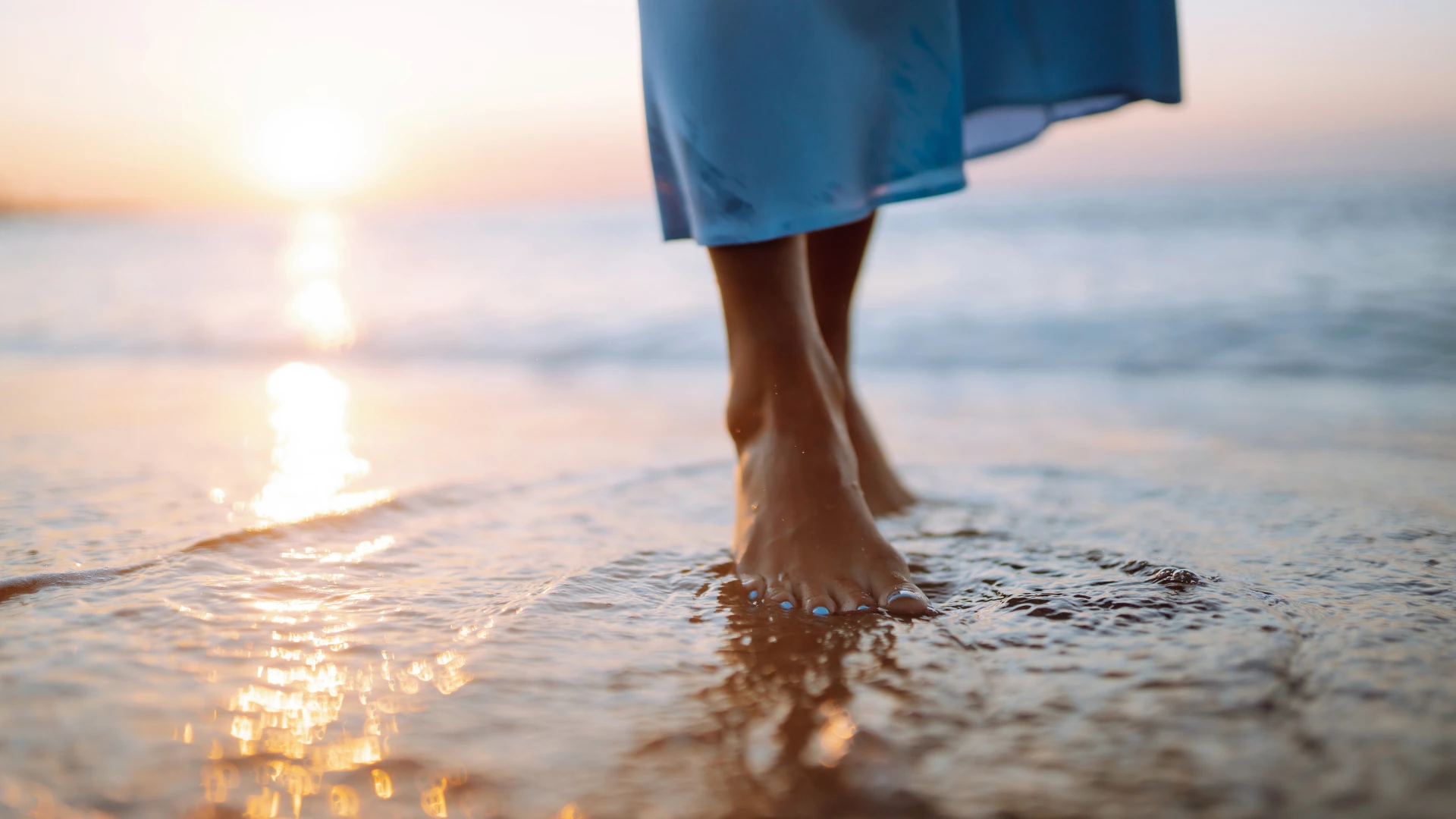Yoga for Stress Relief: 5 Healing Benefits of Grounding

Article At A Glance
Touching the Earth promotes well-being. The benefits of grounding include better sleep and reduced pain and inflammation. After consistently connecting to the Earth, notice how you feel. It may be a subtle tingling in your feet or a calmer demeanor.
Grounding, also known as earthing, is one of the simplest ways to support the body’s natural health and healing response. Dating back thousands of years and represented in various cultures, grounding taps into the conductive charge of the Earth and has documented benefits ranging from improved sleep to faster wound healing.
Our Disconnected Bodies Crave the Benefits of Grounding
From the synthetic shoes we wear to the high-rise buildings we live in, many of our modern-day amenities are actually disconnecting us from ourselves and the Earth. Just like the appliances in our home need to be grounded, so to does the bioelectrical charge of our bodies. Research has shown that when our electrical field is imbalanced, inflammation increases, and the aging process is accelerated.
What Is Grounding?

Grounding refers to the direct skin contact with the surface of the Earth, such as with your bare feet or with various grounding systems. This direct contact with the Earth’s surface restores an essential electric connection which is lost over time because of modern footwear and urban living.
Grounding is as simple as walking barefoot on grass, dirt or concrete for 15 minutes as day.
Yoga for Stress Relief: 5 Key Benefits of Grounding

The benefits of grounding are vast. Some of the most common benefits of grounding are demonstrated through various research studies.
-
Reduces Chronic Inflammation
Chronic inflammation is a causative factor of pain and an accelerant of the aging process. Grounding reduces, or can even prevent, the cardinal signs of inflammation following injury: redness, heat, swelling, pain, and loss of function.
-
Reduces Pain
Most pain is due to or associated with increased inflammation and typically responds rapidly to grounding.
-
Improves Sleep
Grounding has been associated with increased melatonin production while normalizing cortisol levels, both of which reduce sleep disturbances.
-
Improves Blood Flow and Reduces Blood Viscosity
Higher blood viscosity (that is, thicker, sludgy blood) often correlates with diabetes and cardiovascular disorders. Studies found that grounding significantly reduces blood viscosity, thus potentially improving red blood cell spacing (thinning them out).
-
Accelerates Healing
Accelerated wound healing, whether involving injury, surgery, or burn, may result from a combination of reduced inflammation as well as improved circulation carrying healing factors to the site.
How to Reap the Benefits of Grounding

If you are skeptical about the benefits of grounding, put it to the test! Simply sit, stand, or walk with your bare feet on the grass, dirt, or concrete outside for at least 15 minutes a day.
After consistently connecting to the Earth, notice how you feel. It may be a subtle tingling in your feet or a calmer demeanor.
If being outside is not accessible due to your environment or weather, grounding mats are available that can create a similar effect.
Also, read...
5 Practices to Build Your Resilience
Earth Element: Stand Your Ground
Connect With Nature: Take Your Yoga Practice Outside
Related courses
Exploring the Stages of Being: The Yoga of Inner Peace
Livestream with Ellen Saltonstall: Yoga for Bone Health, Strength and Balance

As a Podiatrist, Human Movement Specialist, and Global Leader in Barefoot Science and Rehabilitation, Dr. Splichal has developed a keen eye for movement dysfunction and neuromuscular control during gait.
Originally trained as a surgeon through Beth Israel Medical Center in New York City and Mt Vernon Hospital in Mt Vernon, NY, in 2017 Dr. Splichal put down her scalpel and shifted her practice to one that is built around functional and regenerative medicine.
Functional and regenerative medicine and the role of anti-aging science as it relates to movement longevity is where Dr. Splichal’s passion is focused. Currently enrolled in a Fellowship for Anti-Aging and Regenerative Medicine from the American Academy of Anti-Aging Medicine (A4M), Dr. Splichal’s recommendations typically include PRP or stem cell therapy, photomodulation or red light therapy, dry needling or acupuncture, vitamin supplementation, sensory stimulation of the nervous system, fascial work and integrated exercises.
